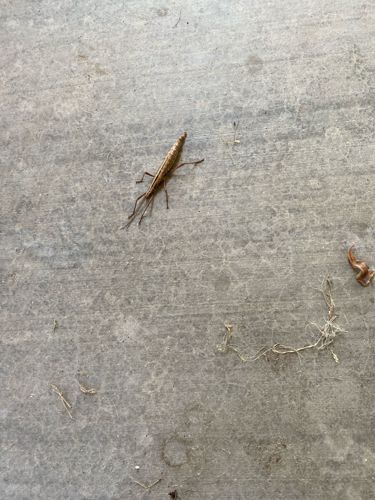Antlion larva (or 'doodlebug')
Scientific Name: Myrmeleontidae (larva)
Order & Family: Neuroptera, Myrmeleontidae
Size: Typically 0.4 - 1.5 cm (0.16 - 0.6 inches) long.

Natural Habitat
Sandy or dusty areas, often under overhangs, eaves, or other sheltered spots where their pitfall traps won't be disturbed by rain. They can also be found in loose soil.
Diet & Feeding
Predatory. The larvae are ambush predators that dig conical pits in loose sand. When an ant or other small insect falls into the pit, the antlion larva grabs it with its formidable jaws and injects venom and digestive enzymes.
Behavior Patterns
The most characteristic behavior of the antlion larva is constructing its pitfall trap. It walks backward in circles, flicking sand out with its head, until a cone-shaped pit is formed. It then buries itself at the bottom, waiting for prey. They move slowly when not constructing pits.
Risks & Benefits
Antlion larvae pose no risk to humans; they are not venomous or aggressive towards people. They are beneficial as natural pest control, preying on ants and other small insects. They are also fascinating subjects for observation and study, playing a role in the local ecosystem as predators.
Identified on: 9/17/2025